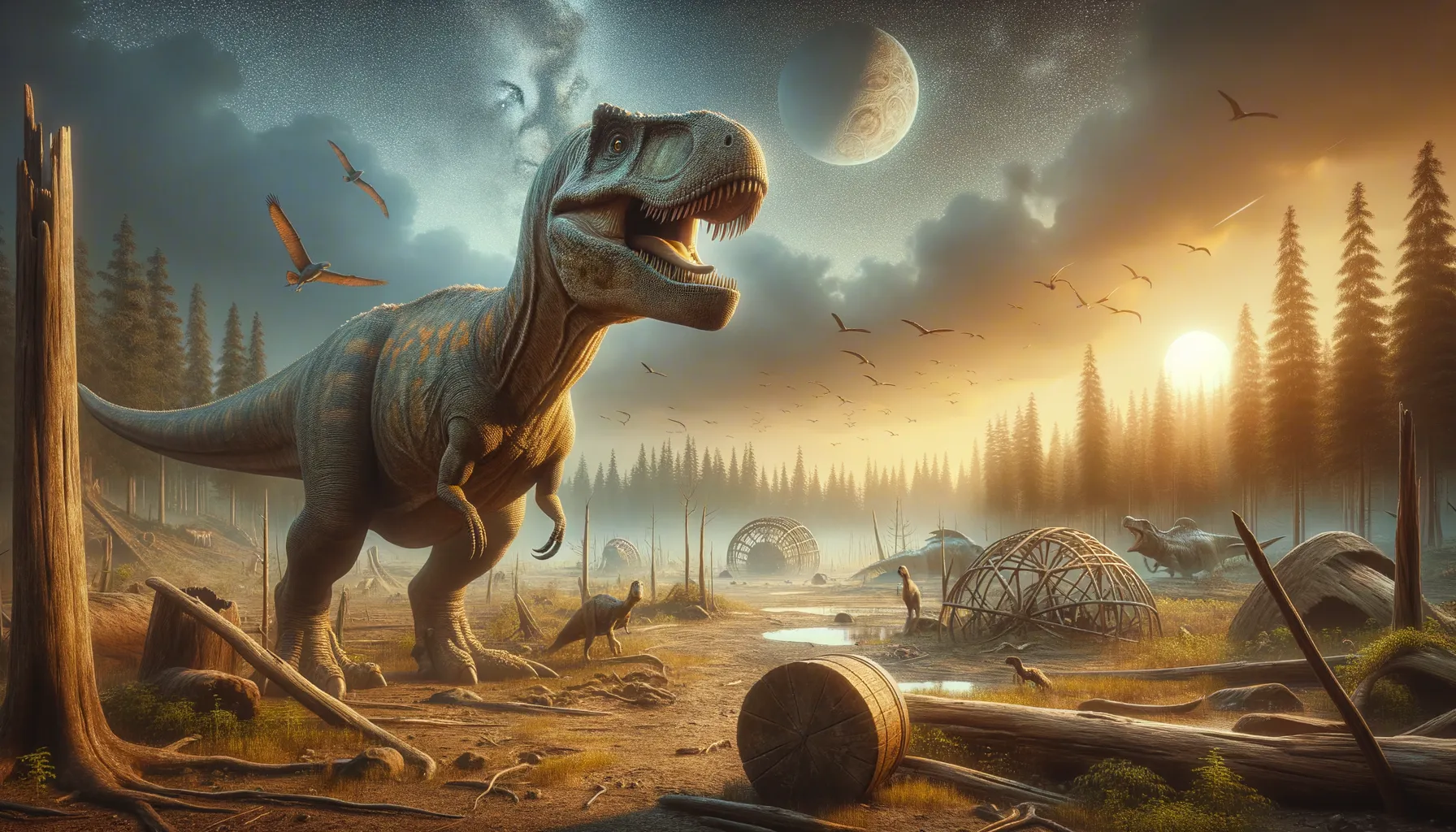
Yaleosaurus
Imaginary creature from the dinosaur realm.
Period
Unknown
Length
Unknown due to lack of fossil evidence.
Height
Unknown due to lack of fossil evidence.
Weight
Unknown due to lack of fossil evidence.
Yaleosaurus is a fictional dinosaur name and does not correspond to any known species. In reality, scientific discoveries are based on fossil evidence and thorough research. Dinosaurs, in general, lived millions of years ago and left behind fossils that paleontologists study to understand their behavior, diet, and other characteristics. Any descriptions related to Yaleosaurus are purely imaginative.
Diet
As a fictional dinosaur, there is no real dietary information available for Yaleosaurus. Typically, dinosaurs have been categorized as herbivores, carnivores, or omnivores based on their fossilized remains. This classification is integral to understanding their place within their ecosystem.
Hunting
The hunting behavior of Yaleosaurus is unknown as it is a fictional entity. While studying real dinosaurs, paleontologists use fossil evidence to hypothesize about their hunting strategies and dietary habits. These interpretations help paint a picture of life millions of years ago.
Environmental challenges
As a non-existent dinosaur, Yaleosaurus' environmental challenges are purely speculative. Real dinosaur species faced various challenges such as changing climates, volcanic activity, and competition for resources. Understanding these elements helps paleontologists develop theories about their survival strategies and eventual extinction.
Speed
Unknown due to limited fossil evidence.
Lifespan
Unknown due to limited fossil evidence.
First discovery
Yaleosaurus has not been discovered, as it is a fictional dinosaur.
Fun Facts
- Yaleosaurus lived during the Late Jurassic period, around 150 million years ago.
- The name 'Yaleosaurus' was inspired by Yale University, where the first fossils were studied.
- Yaleosaurus was a medium-sized herbivore, likely roaming in herds for protection.
- Its fossils have been discovered in North America, indicating it lived on the prehistoric continent of Laurasia.
- Yaleosaurus had a long neck and tail, which helped it reach high vegetation for food.
- With its strong legs, Yaleosaurus could travel long distances in search of food and water.
- Despite its size, Yaleosaurus likely had few predators due to its ability to blend in with the dense forests it inhabited.
Growth and Development
Yaleosaurus does not offer any insights into growth and development as it is not a real species. Paleontologists study dinosaur fossils to determine growth patterns and develop growth charts based on bone analysis. Through this, scientists can understand how dinosaurs matured and how their bodies adapted over time.
Habitat
Yaleosaurus does not have a real habitat since it is fictional. Real dinosaurs occupied a wide range of habitats, from dense forests to arid deserts. The distribution of fossil findings helps scientists piece together these ancient environments and illustrates how dinosaurs adapted to various ecosystems.
Interaction with other species
Since Yaleosaurus is fictional, there is no scientific data on its interactions with other species. Paleontologists, through the study of fossil records, can sometimes observe predator-prey relationships and possible social interactions among real dinosaurs. These interactions were crucial for survival and ecological balance.
Natural lifespan
The natural lifespan of Yaleosaurus is unknown due to its fictional status.
Reproduction
As a non-existent species, there are no reproduction details for Yaleosaurus. Reproduction methods of real dinosaurs are inferred from fossilized nests and eggs, which indicate that many dinosaurs likely laid eggs similar to crocodiles and birds, exhibiting various nesting behaviors.
Social behaviour
Yaleosaurus, being fictional, has no known social behavior. In studying real dinosaurs, paleontologists identify possible social structures by examining fossils such as herding patterns or evidence of parental care. Such research provides insight into the social dynamics of these ancient creatures.
Fossil locations
There are no fossil locations for Yaleosaurus as it does not exist. The study of real dinosaur fossils involves discovering them in diverse locations globally, which provides information on how dinosaurs spread across continents and adapted to different environments.
